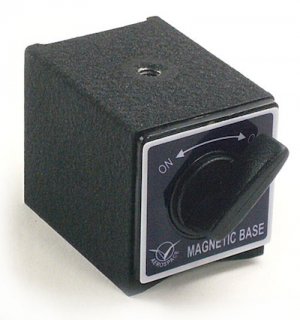- Joined
- Oct 11, 2013
- Messages
- 90
Hello To All;
I was wondering what options are available to clamp work pieces to a smooth production table with no slots. As near as I can determine, the best mechanical advantage would be C-Clamps from each side; though the available space underneath the table is restricted by the table webbing from the original casting process.
Magnetic devices are a possibility, although I have never personally used them. What say the local hobby machinists on this topic? Thanks in advance!
Lou O.
I was wondering what options are available to clamp work pieces to a smooth production table with no slots. As near as I can determine, the best mechanical advantage would be C-Clamps from each side; though the available space underneath the table is restricted by the table webbing from the original casting process.
Magnetic devices are a possibility, although I have never personally used them. What say the local hobby machinists on this topic? Thanks in advance!
Lou O.


